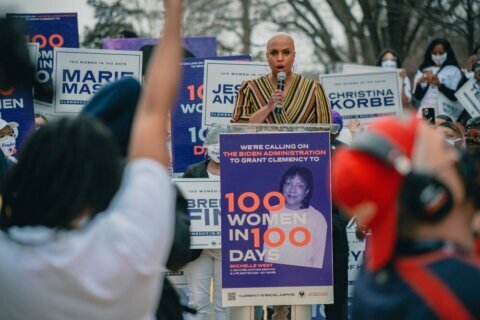This story is part of “Parenting in a Pandemic,” WTOP’s continuing coverage of how parents are dealing with child care, schooling and more through the coronavirus pandemic.
When coronavirus lockdown orders were imposed in D.C. last March, some child care providers were still qualified to receive their subsidy payments based on pre-pandemic attendance.
But that will change starting in November, and a children’s advocacy group is urging the current payment be extended to give more time for child care providers serving low-income families to stay afloat until business picks up again.
The upcoming change will cut payments for providers participating in the Child Care Subsidy Program, essentially basing the amount on the number of children currently attending a facility, rather than the average of what they were paid before the pandemic.
Ruqiyyah Anbar-Shaheen, director of early childhood policy and programs at DC Action for Children, said this policy change will likely devastate the District’s child care sector.
“OSSE (Office of the State Superintendent of Education) continued payments to subsidy programs to ensure they could stay afloat during the pandemic and provide essential services,” Anbar-Shaheen said in a statement.
“To cut payments now would completely upend their initial investment and simultaneously decimate nearly half of the child care sector. The child care slots Mayor Bowser has advocated to increase will be lost.”
OSSE said that the change in subsidy payment is not a cut in child care funding.
“The District of Columbia’s FY21 budget includes $115 million in local and federal funds for child care – that has not changed – and that money will continue to be used to support child care,” Superintendent Hanseul Kang said in a statement.
Because child care providers have such tight margins in their budgets, they depend on what they’re expecting to come in to make ends meet, Anbar-Shaheen said.
“The idea was that attendance drop won’t impact your payment because we’re going to pay you something similar to what you were expecting before this all happened,” Anbar-Shaheen said.
But OSSE said that plan was not meant to be long-term.
“Paying subsidy providers based on average monthly payments – as opposed to children served – was a short-term strategy intended to sustain D.C.’s child care community during the public health emergency,” Kang said.
But child care providers are struggling to get their attendance up for a variety of reasons, including virtual learning, parents working from home, and parents not interested in putting their children in a day care facility.
Another financial hardship child care providers are experiencing is an increase in costs to keep up with health and safety guidelines for their facilities, which Anbar-Shaheen said are “two to three times as much as their usual costs.”
“And so, if they’re getting paid based on a formula from before COVID, that’s not accounting for this increase in the cost per child,” she said.
DC Action for Children is asking OSSE to extend its current guidance until Dec. 31, so child care providers will have the opportunity to recruit families to participate in their program, to rehire staff, and to get their health and safety guide protocols into place before kids show up.
OSSE said that shifting back to paying providers based on enrollment is important in order to “best support our providers, as more and more and more open back up, and ensure that families have acess to the care they need moving forward.”
DC Action for Children is asking OSSE to rethink its decision and to listen to these child care providers.
“We also really wanted them to think through, to be making these decisions with providers at the table, since they know what the impact of the guidance would be. And it could help preempt putting into place guidance, where folks are really blindsided and don’t feel like they can keep up,” Anbar-Shaheen said.
Earlier this week, D.C. announced that it will provide $5 million to child care facilities throughout the city as part of its pandemic relief efforts. The D.C. Child Care Provider Relief Fund will provide emergency money to all licensed child care providers.
Anbar-Shaheen said the fund is exciting news and a great opportunity, but what is really needed is closer to $20 million.
“We can expect providers to get enough support to help them with a month’s cost, but if they’re reopening, and they’ve been closed all this time, we’re hearing that getting your facility up to the new safety guidelines for COVID is costing thousands of dollars. So that could suck up folks’ grants all together.”
Editor’s note: This story has been updated with statement from the Office of the State Superintendent of Education.
- Sign up for WTOP alerts
- Latest coronavirus test results in DC, Maryland and Virginia
- Coronavirus FAQ: What you need to know
- Coronavirus resources: Get and give help in DC, Maryland and Virginia
- Playing and praying: Montgomery County tweaks COVID-19 restrictions
- DC Council extends Bowser’s coronavirus health emergency authority
- ‘Unfathomable’: US death toll from coronavirus hits 200,000
Looking for more information? D.C., Maryland and Virginia are each releasing more data every day. Visit their official sites here: Virginia | Maryland | D.C.








